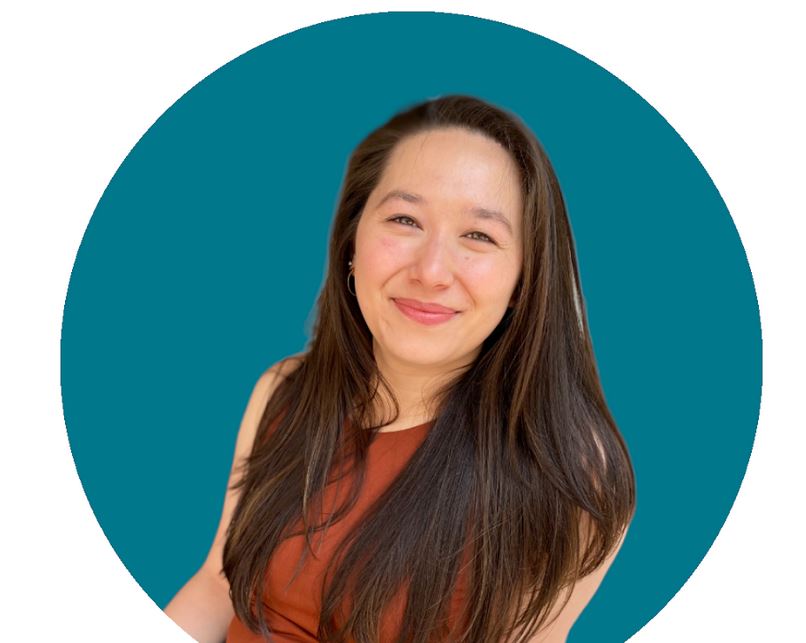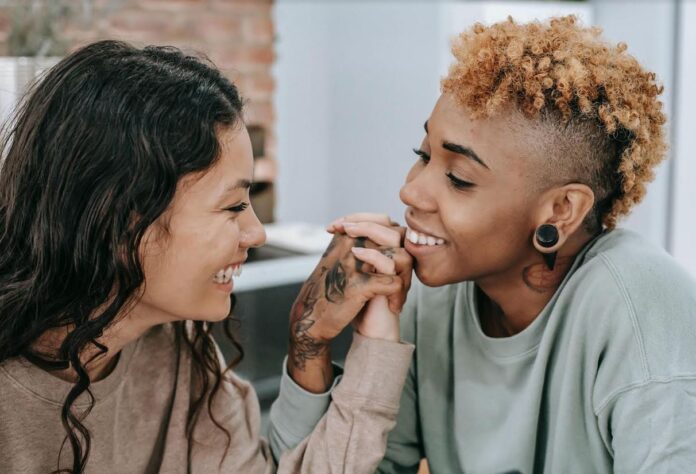By Anise Health and the SeekHer Foundation
In honor of June’s Pride Month and July’s National Minority Mental Health Month, Anise Health hosted a robust discussion with Laura Wu (LMSW) about how the intersectionality of identities can impact an individual’s experience in therapy for both the client and the clinician. Here is a summary of that discussion from Anise Health.
Could you share your journey with mental health and how you decided to be a therapist?
“My own experiences as a mixed race, Queer, Chinese individual have driven me to provide care to Queer folks of color to provide a risk-aware space, while a safe space is never guaranteed.
For most of her life, Laura found herself in the “it’s not so bad” narrative, a perspective echoed through generations among Asian families. However, her PTSD diagnosis allowed her to gain an understanding of her thoughts and behaviors by contextualizing her experience as a Queer woman of color. Informed by her own experiences, Laura became energized by and passionate about destigmatizing mental health for historically marginalized communities. This led Laura to channel her personal learnings into her professional work by pursuing a Licensed Mental Social Worker degree. Throughout her career, Laura worked with different populations in domestic violence work, grief counseling, and eventually found herself studying Dialectical Behavioral Therapy (DBT).
LATEST STORIES
What is DBT? In contrast to the widely known Cognitive Behavioral Therapy (CBT), DBT is a largely different approach that focuses on the client’s skill sets that “helps people create a world they want to live” through four core modules:
- Mindfulness
- Interpersonal Effectiveness
- Emotional Regulation
- Distress Tolerance
What are some unique trends and stressors that Queer Asian individuals often experience?
“I always start off by establishing values”
There is often a misalignment of these beliefs and extreme pressures felt to conform to non-negotiable cultural norms even though they don’t align with personal values. Some Queer Asian individuals also experience estrangement from their families, friends, and communities which is important to address when cultural norms reinforce family-centric expectations. Laura described how second-generation immigrants are often “parentified-children” by necessity including translating and teaching their their parents how to assimilate.
Additionally, queer Asian individuals experience double minority stress, which is when an individual who is a part of different minority groups experiences compounded stress. This can result in feeling marginalized within both queer and racial communities.

For clinicians: what should mental health providers be mindful of when working with Queer Asian individuals?
“The number one thing is to understand what intersectionality is because this life experience shapes an individual’s life.”
Asia is not a monopoly. Asian culture is not a monolity. Clinicians can recognize the beautiful diversity in cultural norms within Asia, take time to educate themselves and use this information to dive deeper into their client’s specific experienes to minimize assumptions while not overburdening client’s to “educate the provider.”
Clinicians shouldn’t always name their problems for clients, instead recognizing that it may be more helpful to allow them to process pain and grief in their own way. Laura also reiterates the acknowledgment that an effective treatment plan can continuously change, and clinicians shouldn’t be afraid of modifying treatment plans based on what the client says. If patients are questioning clinicians, this may be a signal that the clinician has not sufficiently created a space where patients can be honest. To ameliorate this bias and reduce the pressure on patients to educate their providers, here are a few questions clinicians can ask themselves:
- How has their environment shaped their lives?
- As a clinician, notice your own judgment, how do these uncomfortable spaces point to places I can learn?
- How does their client’s specific upbringing impact a previous or current diagnosis or
misdiagnosis?
For clients: what should Queer Asian patients look for when choosing a therapist? Any books, resources, podcasts or articles you’d recommend?
“There isn’t one way to heal. Nothing is wrong with you if you are not clicking with therapists you’re interviewing.”
Finding a therapist that meets your needs is not easy. The mental health field is taught through a predominantly White lens, so even therapists of color may not have the skills to treat people of color effectively. However, there are groups of therapists that work to connect people to culturally responsive care, including Anise Health, Yellow Chair Collective, and the Asian Mental Health Collective. While the population of queer therapists of color is still the minority, the population is growing.
Individuals can “speed date” providers to assess chemistry and determine whether their ways of practicing meet your style. Here are some questions that patients can ask upfront to help assess whether certain therapists are the right fit.
- What demographics do you work with?
- How do you work with individuals who you don’t share identities with?
- How do you support your clients who have experienced homophobia, racism, etc?

For community members: how can allies better support Queer Asian individuals? Allies include friends, family, coworkers, bosses, etc
“We need to leave guilt and shame at the door because this only creates distance when in reality we’re all on the same side.”
Liberation is bound together, so it’s important for everyone to unlearn racism and white heteronormative culture as much as is sustainable for you. Allies can show their support by listening when minorities are teaching or detailing their experience. White or non-queer folks may never fully understand the experiences of a Queer Asian individual, but the goal is not to understand their experience, it’s to listen with an ear of compassion. It is not Queer Asian individual’s job to educate allies and therefore it is important to compensate their time spent teaching allies in workshops and training sessions.
Anise Health and Laura ended the conversation with these words of wisdom: “do what feels sustainable. Figure out what allows you to fill up people’s cups without depleting yourself so you can commit to this lifelong work.”

Clinician bio:
Laura is a licensed therapist in New York and Massachusetts who focuses on using DBT to treat Complex PTSD (C-PTSD) in individuals who have intersecting identities in one or more minority groups. She is also a SeekHer Scholar at the SeekHer Foundation, a nonprofit on a mission to bridge the gender gap of mental health through advocacy, research, and support for emerging leaders. She can also be found at Manhattan Alternative. Ways to follow Laura:
a. IG @healingwithwu
b. Inclusive therapists, psych today, alternative therapists
c. [email protected]
AsAmNews is published by the non-profit, Asian American Media Inc. Follow us on Facebook, X, Instagram, TikTok and YouTube. Please consider making a tax-deductible donation to support our efforts to produce diverse content about the AAPI communities. We are supported in part by funding provided by the State of California, administered by the California State Library in partnership with the California Department of Social Services and the California Commission on Asian and Pacific Islander American Affairs as part of the Stop the Hate program. To report a hate incident or hate crime and get support, go to CA vs Hate.








